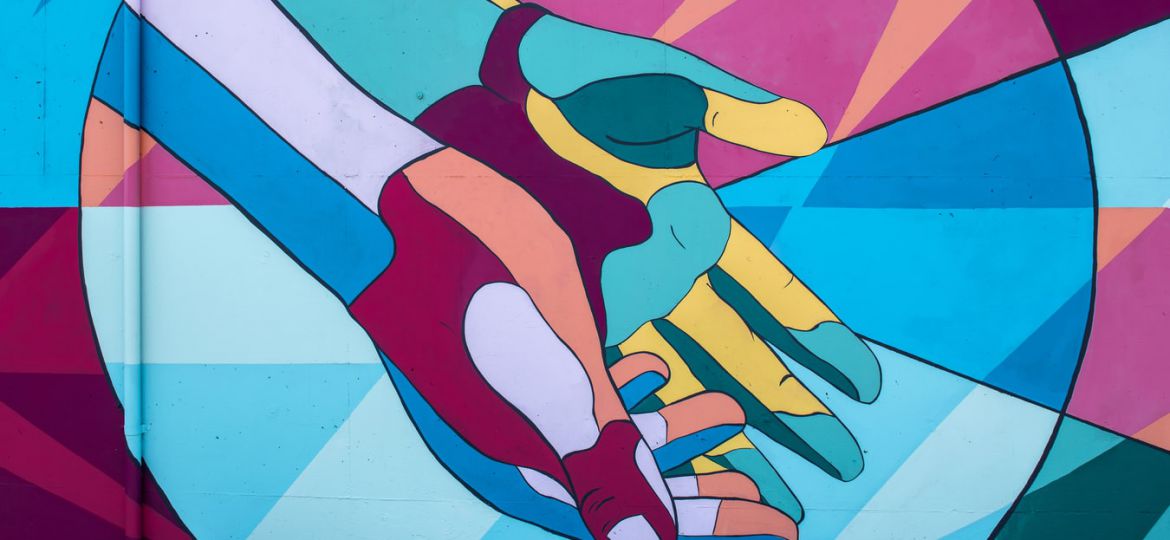
At the third edition of the Gender Bender Arts Festival in Bangalore in 2017, Arunima Bose had to nudge the audience to interact with her artwork – touch it, and play with it. In Full Bloom: Playing with Pleasure was created as an interactive installation to challenge the patriarchal beliefs and ideas around the female body and talk about pleasure. The installation depicted panels of vulvas sculpted out of materials such as sanitary pads, tampons, lace and tassels, flowers, leaves and clay. Each sculpture allowed the audience to experience it and engage their senses, play with the material, explore each crevice, fold, and texture, and notice the pattern and colour. Arunima’s art installation garnered attention, whispered conversations, and a few gasps and giggles. She said, in an interview, that initially the audience did not understand the point of her work and were hesitant to touch the installations until, egged on by her, they overcame their awkwardness and shame.
I remember a similar feeling of discomfort. I was in class six when a friend introduced me to porn. She gave me careful instructions: “Go on the Internet when no one, and I mean No One, is at home. Google the word ‘porn’ and see what happens. Also, when you are done, delete your Google search history.” So one fine afternoon, I furtively browsed porn on the Internet. The sexuality education ‘workshops’ or the biology textbooks had not prepared me for what I saw! This was the first time I had seen realistic depictions of the vagina and penis. Most of us, during childhood, internalised the lesson that sex or pleasure is ‘dirty’ and ‘bad’, and therefore images or videos of the sexual body elicited strong negative reactions and feelings. My experience watching porn was one of discomfort.
Artists like Arunima, around the world are increasingly using ‘tactile art’ to challenge the shame and embarrassment that people feel when they look at their bodies. They are using art as a medium to express their political passions and highlight and engage in conversations around issues of gender and sexuality. Artists today are increasingly disrupting the silence and stigma around dominant perceptions of sexuality by creating 3-D representation of the body and showcasing them at varied public forums. They are also in a way challenging the prevalent idea that sex, the body and the genitalia are not meant to be talked about in public. By transcending established boundaries between art and the audience, artists like Arunima are making it possible for people with disabilities and other marginalised groups to perceive art. The material chosen and woven carefully into the artwork allows the audience to explore the work using their sense of touch and experience pleasure. One can move their fingers along the panels of vulvas and feel the texture of the installation. Arunima uses sanitary pads and tampons intentionally, bringing one even closer to the complex layers of issues surrounding the vagina.
Reading about her art immediately took me down memory lane to a workshop I attended with young girls on sexuality in Uttar Pradesh. As part of one of the activities, the facilitators provided the participants with materials such as leaves, stones, and pulses and directed us to touch them and share our experiences. The group shared their observations and talked about how they felt as they ran their fingers on a leaf, touched a piece of grain, and felt the patterns on a stone. A common thread during these conversations was how “pleasurable” the touch was. These tangible items provided a new way for the facilitators to engage in discussions around desire, draw attention to the body and the stigma attached to it.
The role of material in memory is critical. Stimulating the senses may allow the audience to understand information and retain it. Sarah Naqvi, a textile artist based in India, uses embroidery and textiles as the primary medium in her practice to address issues of marginalisation, sexuality, menstruation and body positivity. For her, embroidery is a universal medium. It allowed her to find her language and move beyond the performativity of art. She has maintained tactility in her work even as she explored more mediums. In an interview, she explained, “I need to be able to feel, touch and communicate without words but also by those textures. Even in performance, videos and songs, I have tried to retain that element of touch.” Her series on menstruation featured embroidered panties with scarlet crotches. The artwork showcased at an exhibition drew the attention of a group of young students who asked her about sanitary products and menstruation. She realised that her art provided a platform and a space for the audience to engage in dialogue[1].
In our society, sexuality is considered dangerous, threatening and unexplored. There is a continued focus on abuse and victimisation. However, as Amber Hollibaugh[1] stresses, “looking at the danger… is only a part of coming to terms with sex.” There is a need to understand sexuality for what it is and develop a positive approach and language to sexual pleasure. Depicting realistic images of genitalia, the body, using the correct terminology, and giving age- and stage-appropriate sexuality education thus becomes crucial. New forms of art that artists like Arunima and Sarah are using open avenues for conversations. Optimising such creative mediums and using materials that stimulate our senses of smell, sound and touch, in addition to that of sight, can heighten our experiences and make us more willing to explore and learn about our sexuality.
[1] Hollibaugh A. (1984). Desire for the Future: Radical Hope in Passion and Danger. In C. Vance (Ed.), Pleasure and Danger: Exploring Female Sexuality. New York:Routledge and Kegan Paul Books
Cover Image: Unsplash